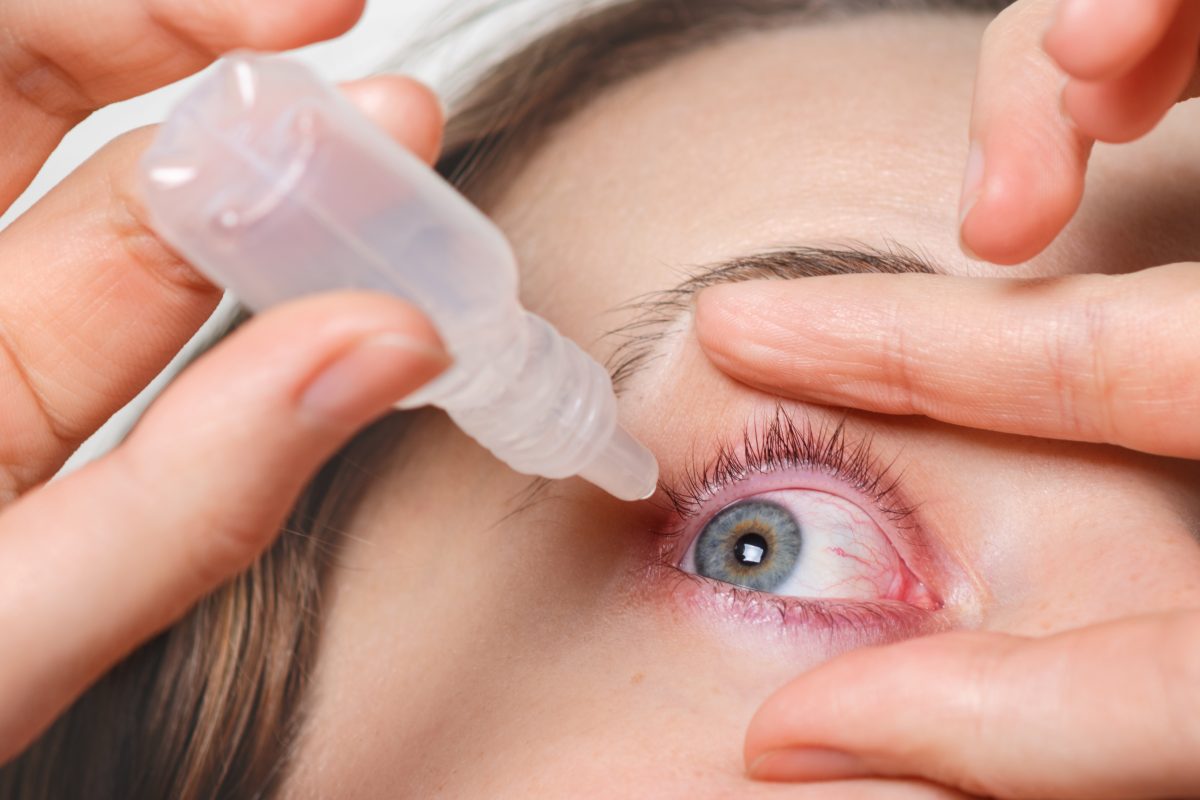Understanding the Causes of STD Eye Infections
When you think of STDs, the eyes may not come to mind. Yet, infections like pinkeye can strike here too. Pinkeye turns your eyes pink and might originate from bacteria or a virus; contact lens wearers must be cautious.
Styes emerge as sore red lumps near lashes or eyelids when oil glands get infected with bacteria. Recognizing these causes helps in preventing and treating eye conditions related to sexually transmitted diseases effectively.
STD Eye Infections Overview
When your eyes get red and sore, it might be more than just tiredness or a bit of dust. Sometimes, what starts as pinkeye could mean an STD is at play. Pinkeye turns the white part pink; dirt isn’t always to blame here, germs can cause this too.
If you wear contacts without keeping them clean, watch out: that’s when bacteria sneak in. Ever spot a tender red lump near your lashes? That’s called a stye, from oil glands getting infected, but don’t stress about giving it to someone else; these bumps won’t spread like colds do.
Got scraped by something green outside? Take care, a plant scratch on the eye might let fungi in causing rare but serious infections if not treated right away. What if deep inside your eye starts swelling up?
This problem named uveitis comes often with autoimmune issues where one’s body fights its own cells, or viruses such as herpes may trigger it too. Keep alert for any changes since taking action soon keeps eyes healthier longer.
Transmission Pathways to the Eyes
Your eyes, those windows to your soul, can also become a pathway for STDs. Gonorrhea bacteria invade easily through the thin conjunctiva before hitting the cornea hard. If you’re not quick with treatment here, the right antibiotics in time, things get worse fast; ulcers may form and risk of further eye damage increases.
Watch out for chlamydia too; it’s sneaky and often unilateral when infecting eyes. It starts as red-eye or discharge but could lead to chronic issues if brushed off as something less serious. Syphilis is rare in initial stages but watch out later on, it might hit any part of your eye then!
Remember: syphilis isn’t just direct attack, your own body’s reaction plays its part too.
Common STDs Affecting Ocular Health
Chlamydia Eye Infection
Chlamydia can infect the eye, leading to a condition known as chlamydial conjunctivitis or trachoma, depending on the strain of the bacterium involved. This type of eye infection can occur in a few ways:
- Direct Contact: The most common way chlamydia can infect the eye is through direct contact with contaminated hands or objects. For instance, if someone touches their genitals or another infected area and then touches their eye, they can transfer the bacteria.
- Genital Infection Spread: If a person has a genital chlamydia infection, the bacteria can be transferred to the eye through bodily fluids or by touching the genital area and then the eyes without proper hand hygiene.
- Mother to Newborn: During childbirth, if a mother has an active chlamydia infection, the bacteria can be passed to the newborn’s eyes, potentially causing neonatal conjunctivitis.
- Contaminated Water: In some cases, exposure to water that is contaminated with chlamydia bacteria can also lead to eye infections, although this is more common with other types of bacteria.
Gonorrhea Eye Infection
Gonorrhea can also infect the eye, leading to a condition known as gonococcal conjunctivitis, which can be quite severe. This infection in the eye happens through a few primary pathways:
- Direct Contact: Like many other infections, gonococcal conjunctivitis can occur if bacteria from an infected person’s genitals or another infected area are transferred to the eye. This can happen through touching the eyes with contaminated hands.
- Sexual Contact: Although less common, exposure to bodily fluids during sexual activities can lead to direct contamination of the eyes if infected fluids come into contact with the ocular area.
- Mother to Newborn Transmission: A newborn can acquire gonococcal conjunctivitis during childbirth if the mother has an untreated gonorrhea infection. The bacteria can infect the baby’s eyes when passing through the birth canal, which is why eye prophylaxis with antibiotic ointment is routinely administered to newborns in many places.
- Contaminated Objects: Sharing towels, cosmetics, or other personal items with someone who has gonorrhea can also lead to eye infections if these items have been contaminated with the bacteria and come into contact with the eyes.
Herpes Eye Infection
Herpes in the eye, also known as ocular herpes or herpes simplex keratitis, is typically caused by the herpes simplex virus (HSV). There are two types of herpes simplex virus: HSV-1, which is more commonly associated with oral infections (cold sores), and HSV-2, which is more commonly associated with genital infections. However, both types can cause eye infections. Here’s how herpes can infect the eye:
- Autoinoculation: This is the most common way herpes simplex virus infects the eye. If an individual has a cold sore (herpes simplex virus infection around the mouth) and touches the sore and then touches their eye, the virus can be transferred to the eye. This is more likely to happen if there is a break or damage to the surface of the eye, such as a scratch.
- Primary Infection: In some cases, the initial exposure to the herpes simplex virus might directly affect the eye, especially if the virus comes into contact with the eye area. This could happen through close contact with an infected person.
- Reactivation: For many individuals, the herpes simplex virus is not eliminated from the body after the initial infection and can remain dormant in nerve cells. It can reactivate due to various triggers such as stress, illness, immune system changes, or eye injury. When the virus reactivates, it can manifest in the eye even if the original site of infection was elsewhere, such as the lips.
- Direct Contact with Infected Genital Secretions: Although less common, it is possible for HSV-2 to infect the eye if there is direct contact with infected genital secretions, typically through manual transmission or less commonly, during childbirth.
Symptoms of STD-Related Eye Issues
Ocular STDs can present through various symptoms, necessitating vigilant recognition and prompt treatment.
Infections like Chlamydia and Gonorrhea might provoke conditions such as conjunctivitis, marked by eye redness, irritation, or discharge which could escalate to corneal scarring if neglected.
Herpes Simplex Virus often leads to herpes keratitis with symptoms including eye pain, blurred vision along with watery discharges, heightening light sensitivity; these signs may recur frequently causing distress.
Syphilis too manifests diversely within ocular regions potentially triggering uveitis or interstitial keratitis; individuals may experience blurry vision mingled with floaters accompanied by discomfort in their eyes exacerbating the severity if untreated properly on time.
In scenarios involving HIV, though not directly linked, the weakened immune system fosters secondary opportunistic infections that abate overall wellbeing thus emphasizing comprehensive healthcare strategies imperative in preventing long-term complications further accentuating the importance for regular screenings available with STDCheck designed explicitly keeping patient confidentiality utmost assuring a reliable resource towards proactive health management.
Diagnosis and Testing Methods
You want to know if your eyes have an STD. Well, a doctor or health care worker will help. They look at the signs and think about what you’ve done that could make you sick (like who you’ve been with). The most reliable and comprehensive way to get for chlamydia and gonorrhea is with a PCR test.
They test for things in your body that show disease can spread during sex. Sometimes doctors recommend getting shots for hepatitis A or B, as these are part of keeping away from HIV too. Experts made this plan after lots of study and talk with other smart people on how to keep individuals healthy when it comes down to such diseases.
If allergic or some drug isn’t okay for someone, there’s another way – but usually not quite as good according to research we have so far on stopping symptoms. Remember though; follow what’s suggested first unless there’s a strong reason not to!
Treatment Options for Ocular STDs
In treating ocular STDs, we must target the real culprits. Often these infections start when bad viruses beat our eyes’ defenses, a mix of barriers and immune responses designed to keep them out. Studies show some viral strains resist common drugs, making it harder to treat your infection right.
If this happens with you, doctors might use corticosteroids; they help calm eye immunity issues that can harm vision if left unchecked. Yet many times, doctors mistake these for bacterial problems; wrong treatment then begins too late or targets the wrong enemy. It’s key not only knowing what bugs cause trouble but also having effective treatments ready before worse damage sets in.
Prevention Strategies and Safe Practices
In your fight against STD eye infections, knowing key facts can arm you. Half of newborn syphilis cases come from missed tests and treatments in pregnancy care. To protect yourself and others: be proactive about testing; if there are risks or signs of infection, – go see a doctor fast!
Remember that drug use is on the rise among those with syphilis – it’s not just “someone else’s” issue. Clinics should follow CDC guidelines to give high-quality STD care; this includes thorough check-ups for all who might need them, like pregnant women, and strong follow-up plans after treatment so reinfection doesn’t happen.
Eye infections from STDs result from unprotected contact, often spreading through touch after handling affected areas. Chlamydia and gonorrhea are frequent culprits behind such issues. Vigilance in preventive measures like safe sex practices helps curb these risks significantly.
If you notice symptoms like redness or irritation, seeking prompt medical advice is crucial. Tests available at STDCheck offer discreet ways to confirm your status allowing for timely treatment options, helping keep both ocular health and overall well-being safeguarded against the complications that untreated sexually transmitted infections can bring about.
Secure and Confidential
STD testing services
The fastest results possbile - available in 1 to 2 days

Tagged
Categorized As
Author: STD Check Editorial Team
At STDCheck.com, we go to great lengths to ensure quality content. We’re using our own collection of data. It is not bought or made up for “click-bait” purposes. We don’t entice traffic with cheesy graphics or raunchy headlines. Our information is to promote STD testing, educate people, let go of social stigmas, and bring awareness. We also provide a completely confidential atmosphere through private testing. When we produce an article, it is fact-based. We check it with medical advisors that approve it. Our staff consists of doctors and other medical professionals who peer review the content we make available on STDCheck.com. From all over the world, we have sourced the best and the brightest content developers, including medical professionals, marketing engineers, data scientists, content specialists, and media relations.




